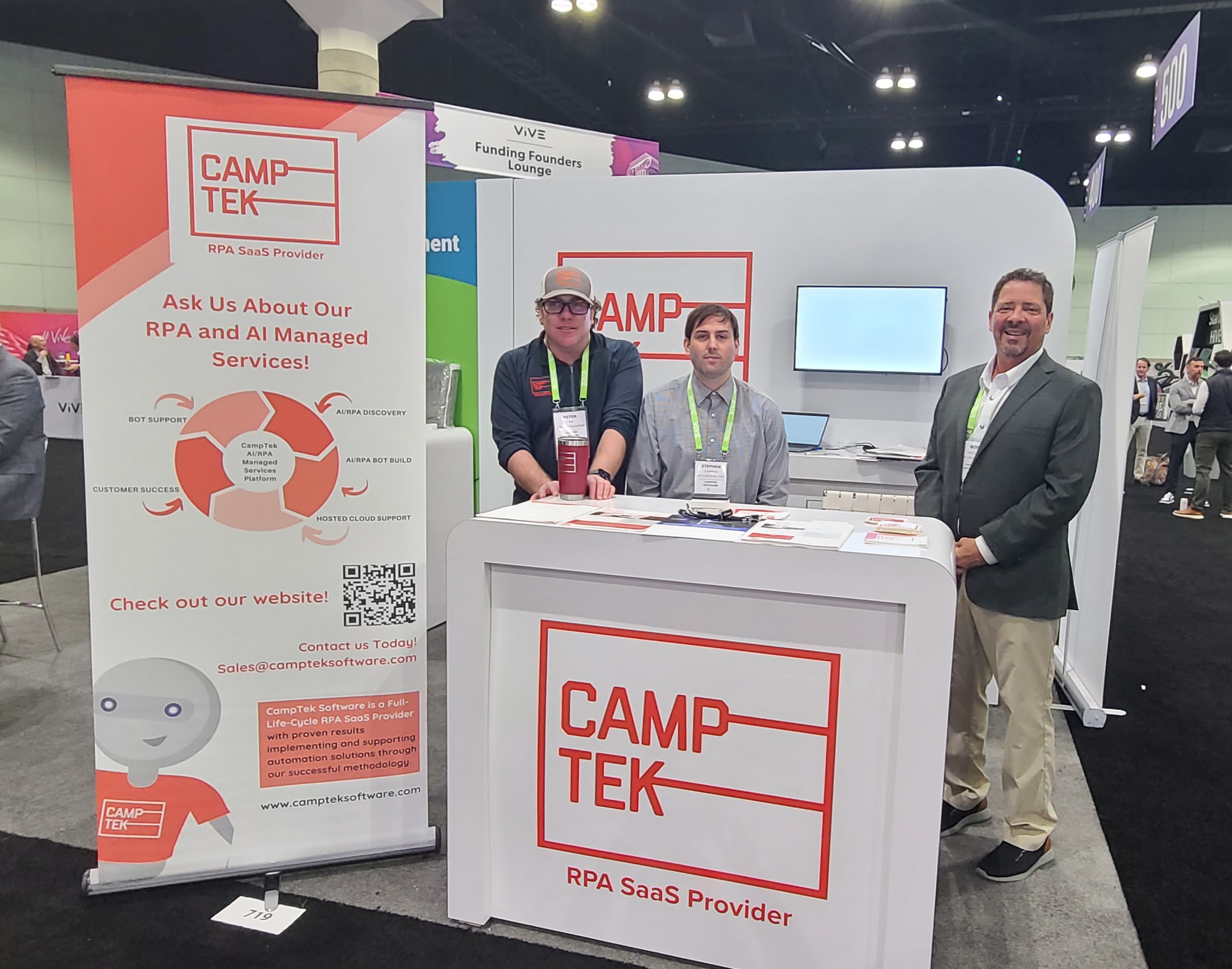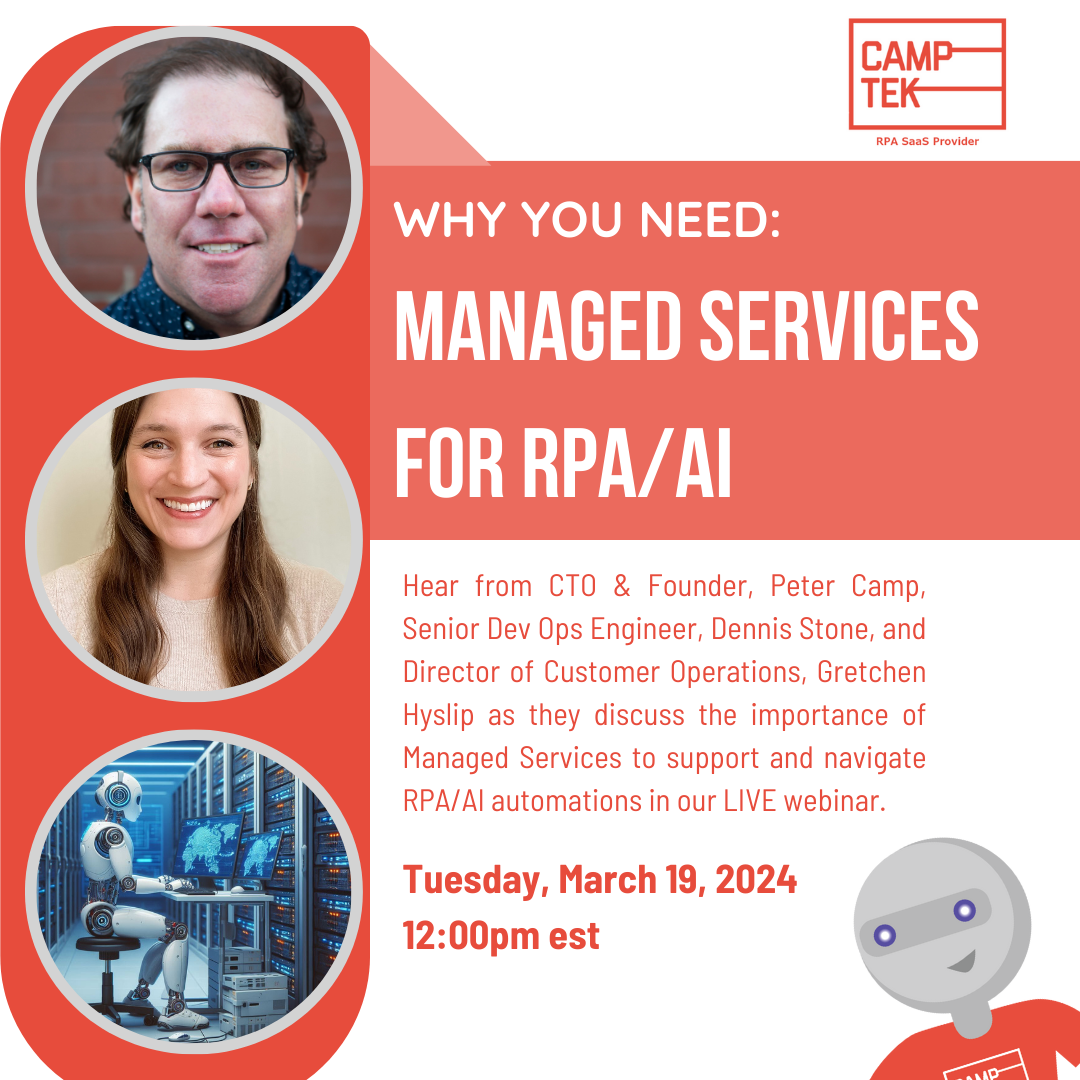AI Journey 2024: Is RPA Needed Any Longer?
Years ago, when I started CampTek Software, I was on a roundtable with a group of practitioners and business leaders who were in the Automation space. We were having an open discussion around RPA, and each person spoke about where they or their company was in their adoption and use of the platform. Most indicated they were just getting started, had a fairly well-developed COE, or were somewhere in the middle. As we went around the quorum, one person indicated that his company had decided to “go right to AI and will skip RPA altogether.” I was astonished by the answer and have tried to figure out the thought process around this decision.
In a previous blog, I spoke about how AI and RPA are often confused, and now with more awareness and excitement around Chat GPT, Microsoft CoPilot, and AI Large Language Models. Everything is now classified as AI, even though in some cases it may be RPA. The truth of the matter is that RPA, at its core is a representation of years of Machine Learning Models. Today’s platforms like UiPath have a lot of AI embedded into their activities to increase reliability as they interact with applications on a Windows desktop. Each activity represents thousands of hours of development, testing, and use. These activities need to work 100% of the time, so it makes sense that they are refined, very similar to ML.
That’s all well and good, but is RPA needed any longer? The short answer is yes and yes and YES! The longer explanation is focused on several key areas to consider, in relation to AI.

%20(3).png?width=1584&name=Newsletter%20Template%20Images%20for%20Hubspot%20(1600%20%C3%97%20900%20px)%20(3).png)

-Jan-24-2023-12-37-45-4647-AM.png)


-1.webp)

%20(2).webp)